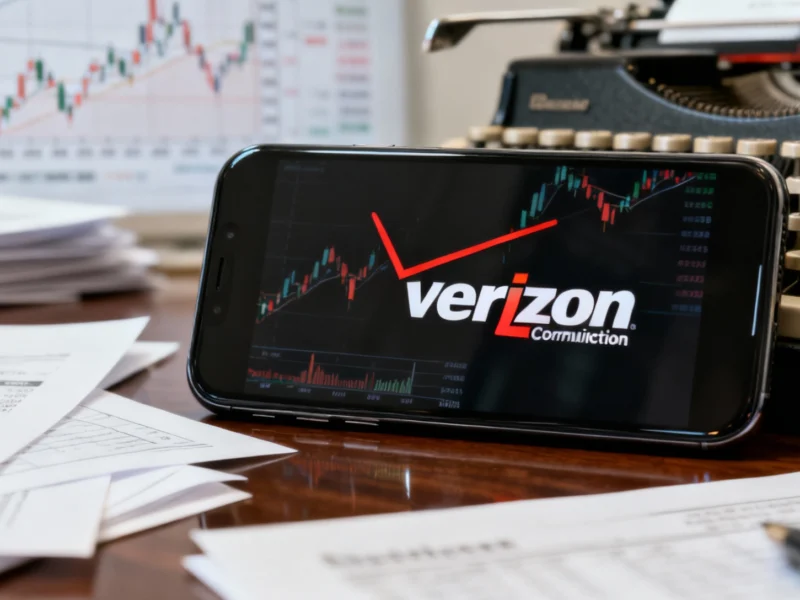Verizon Communications Inc (NYSE:VZ) has crossed a significant threshold for income investors, with its dividend yield pushing past 7% as shares traded as low as $39.41 during Monday’s session. This substantial yield, based on the company’s quarterly dividend annualized to $2.76 per share, places the telecommunications giant among the highest-yielding components of the S&P 500 Index. According to recent analysis from Forbes contributors, such yield levels warrant careful examination of both opportunity and sustainability factors that could impact total returns for dividend-focused portfolios.
Understanding Dividend Yield and Total Returns
The concept of yield in finance represents the annual dividend income relative to share price, but the true value of dividends extends far beyond current income. Historical market data reveals that dividends have contributed significantly to the stock market’s total return over decades. For perspective, consider an investment in the S&P 500 ETF (SPY) made at the end of 1999: while the share price itself declined by approximately $4.67 by 2012, dividends totaling $25.98 per share generated a positive total return of 23.36% over the period. Industry experts note that even with dividends reinvested, this translated to an average annual return of just 1.6%, making Verizon’s current 7% yield appear particularly compelling by comparison if sustainable.
Verizon’s Dividend Sustainability Analysis
When evaluating any high-yield opportunity, the crucial question centers on dividend sustainability. Verizon Communications has established an impressive track record, having grown its dividend for more than 20 consecutive years according to data from Dividend Channel. This consistent history of increases provides some confidence in the company’s commitment to shareholder returns, though dividend amounts typically follow profitability cycles and are never guaranteed. Additional coverage of dividend growth stocks highlights how companies with lengthy dividend increase records often demonstrate financial resilience during economic downturns.
Key factors supporting Verizon’s dividend include:
- Stable cash flow from telecommunications services
- Market leadership in wireless and broadband
- Diverse revenue streams across consumer and enterprise segments
- History of prudent capital allocation
Comparing High-Yield Dividend Opportunities
Verizon joins a select group of S&P 500 companies offering elevated yields in the current market environment. A recent screening for stocks where yields got more juicy identified numerous companies across sectors offering attractive income potential. For investors seeking the most reliable dividend payers, the Dividend Aristocrats List provides vetted companies with 25+ years of consecutive dividend increases. Related analysis suggests that monthly dividend payers might offer additional benefits for income-focused strategies, as detailed in this free monthly dividend report covering stocks yielding 8% or more.
The Role of Dividends in Long-Term Investing
Understanding the fundamental nature of dividends helps investors appreciate their importance in wealth building. Dividends represent a direct share of company profits distributed to shareholders, and when reinvested, they can dramatically accelerate compounding growth. For income-oriented investors, particularly those in or near retirement, reliable dividends can provide essential cash flow while potentially preserving capital. Verizon’s current yield situation highlights how market volatility can create unexpected opportunities for yield-seeking investors, though comprehensive due diligence remains essential before making investment decisions based solely on yield metrics.
Strategic Considerations for High-Yield Investors
While Verizon’s 7%+ yield presents an attractive proposition, experienced investors typically consider multiple factors beyond current yield alone. The company’s ability to maintain its dividend through various economic conditions, competitive pressures in the telecommunications sector, and capital expenditure requirements for network development all influence long-term dividend sustainability. Investors might also explore complementary opportunities among other high-quality dividend payers to build a diversified income portfolio. Additional resources for dividend investors include screening tools, historical performance data, and expert analysis available through specialized financial platforms that track dividend-paying stocks across market capitalizations and sectors.
As with any investment decision, consulting with financial professionals and conducting thorough independent research remains crucial when evaluating high-yield opportunities like Verizon’s current offering. The intersection of attractive yield, company fundamentals, and broader market conditions creates a compelling case for closer examination by income-focused investors seeking to enhance their portfolio’s total return potential through strategic dividend investments.



